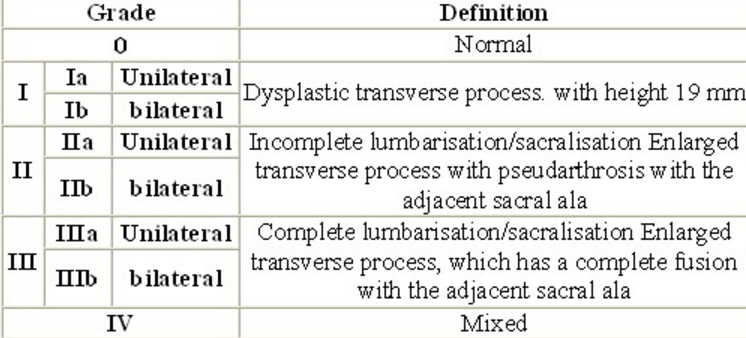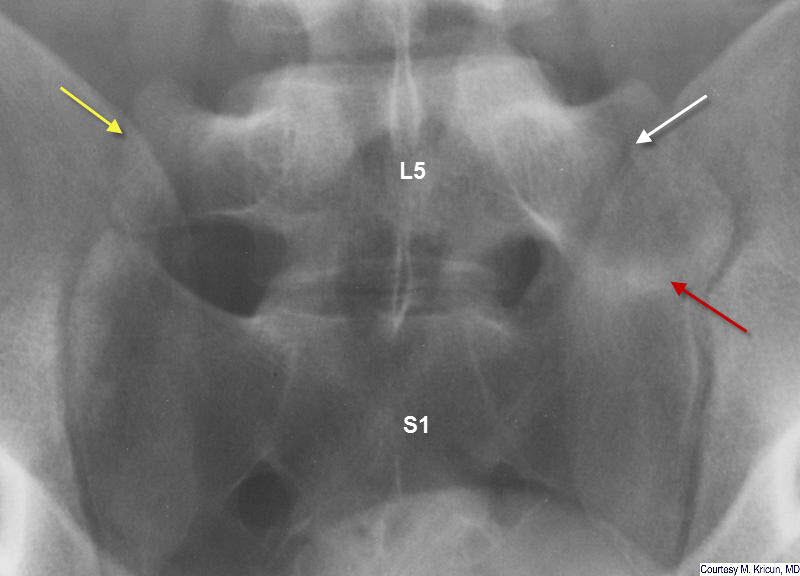|
|
Transitional Lumbosacral Vertebrae
Sacralization and Lumbarization
General Considerations
- Sacralization and lumbarization are congenital anomalies of the fifth lumbar (L5) and first two sacral (S1 and S2) segments
- The anomalous segments are frequently referred to as transitional vertebrae
- Lumbarization occurs due to non-fusion of the first two sacral segments allowing the lumbar spine too have what appear to be six segments
- The sacrum appears to have only 4 segments rather than its normal 5
- Sacralization occurs when one or both transverse processes of L5 fuse with the first sacral segment (or rarely, the ilium)
- This may be unilateral or, more frequently, bilateral
- Sacralization occurs in about 4% to as many as 36% of the population
Clinical Findings
- It is controversial as to whether these anomalies cause pain
- It is theorized that they may produce abnormal mechanics which can lead to pain, but this is not proven
- Many people with transitional vertebrae are asymptomatic
Imaging Findings
- Whatever its clinical implications, the presence or absence of a transitional vertebra is important if a surgical intervention at a particular level is contemplated
- Sacralization of L% can range from wider, longer transverse processes of L5 to partial or complete fusion to the sacrum
- Lumbarization of S1 can show an abnormal articulation with the S2 segment, facet joints of the lumbar type, and a full-disk between S1 and S2.
- CT can be use for the definitive bony anatomy; they may be more difficult to identify on MRI for a number or reasons
Castellvi Classification

Classification of LSTV after Castellvi et al. References: Luoma K, Vehmas T, Raininko R, Luukkonen R, Riihimäki H. Lumbosacral Transitional Vertebra Relation to Disc Degeneration and Low Back Pain. Spine.2004. 15; 29(2): 200–205

Sacralization of L5. A close-up view of the sacrum shows bilaterally enlarged transverse processes of L5 (white and yellow arrows), fused on the left (red arrow) with the sacrum. The fifth lumbar segment is labeled L5 and the first sacral segment is labeled S1.
Lumbosacral Transitional Vertebrae: Classification, Imaging Findings, and Clinical Relevance. G.P. Konina and D.M. Walz. AJNR 2010 31: 1778-1786
LearningRadiology.com™ is designed for use by healthcare professionals and students seeking medical information. The information contained herein should NOT be used as a substitute for the advice of an appropriately qualified and licensed physician or other health care provider. The information provided herein is for educational and informational purposes only and in no way should be considered as an offering of medical advice. Please check with a qualified physician if you suspect you are ill. Never disregard professional medical advice or delay seeking it.
|
|
|